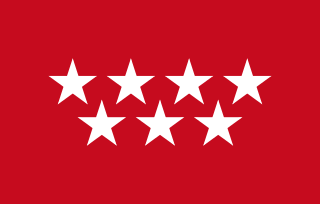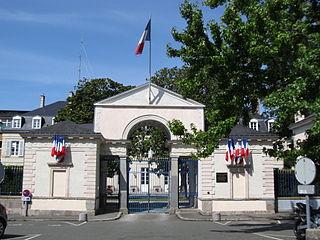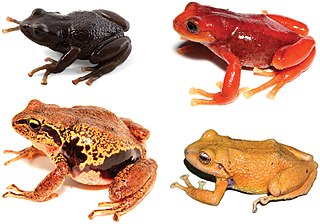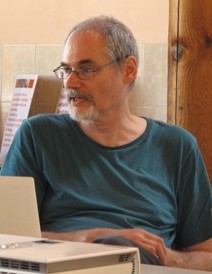
Colombia, officially the Republic of Colombia, is a country in South America with territories in North America. Colombia is bounded on the north by the Caribbean Sea, the northwest by Panama, the south by Ecuador and Peru, the east by Venezuela, the southeast by Brazil, and the west by the Pacific Ocean. It comprises 32 departments and the Capital District of Bogotá, the country's largest city.

The Canary Islands, also known informally as the Canaries, is a Spanish archipelago in the Atlantic Ocean, in a region known as Macaronesia. At their closest point to the African mainland, they are 100 kilometres west of Morocco. They are the southernmost of the autonomous communities of Spain, and are located in the African Tectonic Plate. The archipelago is economically and politically European, and is part of the European Union.

New Caledonia is a special collectivity of France in the southwest Pacific Ocean, south of Vanuatu, about 1,210 km (750 mi) east of Australia and 17,000 km (11,000 mi) from Metropolitan France. The archipelago, part of the Melanesia subregion, includes the main island of Grande Terre, the Loyalty Islands, the Chesterfield Islands, the Belep archipelago, the Isle of Pines, and a few remote islets. The Chesterfield Islands are in the Coral Sea. French people, especially locals, call Grande Terre Le Caillou.

The Community of Madrid is one of the seventeen autonomous communities of Spain. It is located in the centre of the Iberian Peninsula, and of the Central Plateau . Its capital is the city of Madrid, which is also the capital of the country. The Community of Madrid is bounded to the south and east by Castilla–La Mancha and to the north and west by Castile and León. It was formally created in 1983, based on the limits of the province of Madrid, which was until then conventionally included in the historical region of New Castile.

Mayenne is a department in northwest France named after the Mayenne River. Mayenne is part of the current region of Pays de la Loire and is surrounded by the departments of Manche, Orne, Sarthe, Maine-et-Loire, and Ille-et-Vilaine.

Baja California Sur, officially the Free and Sovereign State of Baja California Sur, is the second-smallest Mexican state by population and the 31st admitted state of the 32 states which make up the 32 Federal Entities of Mexico. It is also the ninth-largest Mexican state in terms of area.

Tenerife is the largest and most populous island of the eight Canary Islands. It is home to 43 percent of the total population of the Canary Islands. With a land area of 2,034.38 square kilometres (785.48 sq mi) and a population of 917,841 inhabitants at the start of 2019 it is also the most populous island of Spain and of Macaronesia.

Georges-Louis Leclerc, Comte de Buffon was a French naturalist, mathematician, cosmologist, and encyclopédiste.

Bernard-Germain-Étienne de La Ville-sur-Illon, comte de Lacépède or La Cépède was a French naturalist and an active freemason. He is known for his contribution to the Comte de Buffon's great work, the Histoire Naturelle.

In biology, a type is a particular specimen of an organism to which the scientific name of that organism is formally attached. In other words, a type is an example that serves to anchor or centralize the defining features of that particular taxon. In older usage, a type was a taxon rather than a specimen.

Achille Valenciennes was a French zoologist.

Alcide Charles Victor Marie Dessalines d'Orbigny was a French naturalist who made major contributions in many areas, including zoology, palaeontology, geology, archaeology and anthropology.

The Felinae are a subfamily of the family Felidae. This subfamily comprises the small cats having a bony hyoid, because of which they are able to purr but not roar.

Talpa is a genus in the mole family Talpidae. Among the first taxa in science, Carolus Linnaeus used the Latin word for "moles", talpa, in his Regnum Animale to refer to the commonly known European form of mole. The group has since been expanded to include 11 extant species, found primarily in Europe and western Asia. The European mole, found throughout most of Europe, is a member of this genus, as are several species restricted to small ranges. One species, Père David's mole, is critically endangered. One fossil species, the Tyrrhenian mole, is known from the Pleistocene of Corsica and Sardinia. These moles eat earthworms, insects, and other invertebrates found in the soil.

The Region of Murcia, is an autonomous community of Spain located in the southeast of the Iberian Peninsula, on the Mediterranean coast.

The Craugastoridae, or fleshbelly frogs, are a family of New World direct-developing frogs. As delineated here, following the Amphibian Species of the World, it is a large family containing 857 species. They are found from the southern United States southwards to Central and South America.
Prochelidella is an extinct genus of Early to Late Cretaceous chelid turtles from the Bajo Barreal, Candeleros, Cerro Barcino and Portezuelo Formations of the Cañadón Asfalto, Golfo San Jorge and Neuquén Basins in Patagonia, Argentina. It includes the following species:

The biodiversity of Colombia is the variety of indigenous organisms in the country with the second-highest biodiversity in the world, behind Brazil. As of 2016, 56,343 species are registered in Colombia, of which 9,153 are endemic. The country occupies the first position worldwide in number of orchids and birds, second position in plants, amphibians, butterflies and fresh water fish, third place in species of palm trees and reptiles and globally holds the fourth position in biodiversity of mammals.
Neusticemys is an extinct genus of sea turtle. Its type species is Neusticemys neuquina.

David Olivier is a French and British philosopher and antispeciesist activist. He is founder of the French journal Cahiers antispécistes, the annual event Veggie Pride and of the annual meeting Les Estivales de la question animale . Olivier is also the creator of the term "veggiephobia" and of numerous articles and conferences. He is an advocate of utilitarian and antinatauralist ethics, and defines himself politically as a progressive.


















